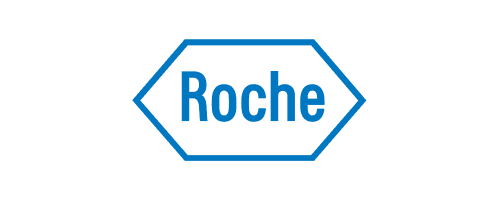Dermavant Sciences Shaves Weeks
Off Its NDA Timeline
Completed NDA process up to six weeks ahead of deadline
Reduced amount of content rework with gated workflows
Improved document quality and user experience
Shortly after Jason Maze started at Dermavant Sciences as the director of global regulatory systems and information management, he began implementing a new publishing platform from the ground up in an almost totally green-field environment.
Having supported the publishing and submissions functions at a number of similar organizations, Maze believed that a paradigm shift was long overdue. “Publishing is a very important piece of the puzzle,” he explains. “But I’ve always felt like it was done in the wrong way. Publishing needs to be mainlined and integrated into the day-to-day process of application development rather than being treated as a separate task at the end of the process.”
Bringing publishing into the mainstream
At Dermavant, Maze put his theory into action. With no formal information management system in place, the immuno-dermatology company collected regulatory documents and shared files through Microsoft SharePoint. Beyond that, they managed an inefficient process for submission publishing: Content writers first collaborated internally, then handed documents over to external publishing contractors, and brought the final dossier back in house for quality check and review. From there, they’d often send files back to the contractors for corrections— all during a time when Dermavant was racing to be first to market with a new drug for treating plaque psoriasis.
Maze realized that with the right technology partner, he could significantly streamline the company’s publishing process. “We already work very closely with our medical and scientific writing teams to maintain document quality from as early on in the process as possible,” he says. “We knew that if we had an easy-to-use system that could extend this sort of collaboration, those teams would embrace it.”
Building the perfect platform
Maze didn’t need to look far for a solution. Dermavant previously implemented the Veeva Vault RIM Suite to unify regulatory processes, but they weren’t maximizing its usage when he joined. Already experienced with Vault RIM from his work at other companies, Maze immediately began to train the Dermavant teams on the suite— specifically Veeva Vault Submissions, Veeva Vault Submissions Archive, and Veeva Vault Submissions Publishing.
Luckily for Maze and team, getting users onboarded was a relatively easy process. “There’s so much industry experience built into Vault RIM that you can stand it up very quickly and have an out-of-the-box version ready for your user community,” he explains. “For that reason, our approach was to set up as close to a stripped down version of the platform as possible and then build it out from there to reflect our own processes. We wanted the platform to be compliant but not complex.”
Piloting for success
With that in mind, Maze assembled a pilot project with members of the content writing teams so that he could get a sense of how they were using the tool, what they needed from it, and what was missing. He quickly identified several process inefficiencies: Writers spent time redoing—or worse, undoing—existing work, so Maze immediately introduced gated workflows. As a result, says Maze, “our publishing process became much more efficient. The quality of work went up and the rework went down to almost nothing.”
As both the content team and the development team became more familiar with working in the system, Vault RIM evolved into the single source of truth for documents and data. It was simple for users to learn and developers appreciated that it was easy to customize.
While Maze and team originally planned to initiate content management in Vault RIM in parallel with their external publishing processes, they quickly came to realize that the whole operation could take place in-house with Veeva.
NDA-ready
After the success of the pilot project and the team’s first small submission (a process that took about six weeks), Dermavant made the decision to go all in on Vault Submissions Publishing—which meant that they’d publish and submit their upcoming NDA exclusively through Vault RIM.
“There’s so much industry experience built into Vault RIM that you can stand it up very quickly and have an out-of-the-box version ready for your user community.” Jason Maze, director of global regulatory systems and information management, Dermavant Sciences
Knowing that they had to move fast to meet the NDA timeline, Maze wanted to get as close to real-time publishing as possible. This included moving the traditional quality check and document formatting process farther upstream into the author channel. After building out content templates so that people could see how a document should look and feel right from the start, users went to Maze’s team any time a document seemed to go off track.
As a result, they were able to spot and fix problems much earlier in the process than they were able to in the past. The fact that writers were also able to hyperlink to other documents in Vault RIM also helped bring the organization closer to Maze’s goal of real-time publishing.
Upping speed, efficiency, and user experience
“We had a very distinct goal at Dermavant of changing the way we published documents,” says Maze. “The proof that we met our goal is in the NDA—the speed with which we got it done and the quality of that dossier. We didn’t have a Plan B. It was all about bringing in Vault RIM, getting user adoption, achieving process improvements, and making the NDA happen at breakneck speed.”
In the end, the Dermavant team shaved a month off the NDA timeline and as much as six weeks off their internal deadline.
While speed and efficiency were certainly important, Maze was equally concerned about creating a better workflow and experience for his publishing team. He’s happy to report success in that area as well.
Says Maze, “Because we have such a small user community, we can really sense their mood every day. We know when their frustration level is high, and when they’re feeling like everything is broken. Now that we’re using Vault RIM, we just don’t get that feeling from them anymore. Everything is stable and sound.”
As a result, document quality is up and the pressure is off the users. “Everyone can relax,” says Maze. “They no longer feel like they have to track every aspect of the process themselves. With Vault RIM, there’s a formal mechanism for everything, and everybody knows that the document is a work-in-progress until it’s reached the final stages in the system.”
The road ahead
Now that Dermavant employees are comfortable with Vault RIM, Maze is looking forward to taking advantage of the integrations among the rest of the solutions in the Vault RIM Suite. This includes expanding the way they’re using Vault RIM to make it more of a planning tool, building more robust templates, and increasing training options.
“We want to make it the center of our regulatory universe, not just the machine that pushes the content through and makes submissions,” says Maze. “With the help of the Veeva team, we hope to find the best way to build it out and achieve this transformation.”
Due to his success in streamlining Dermavant’s publishing process, Veeva recognized Jason Maze as a Regulatory Hero at its 2021 R&D and Quality Summit. Watch Jason’s Summit session at veevaconnect.com.



